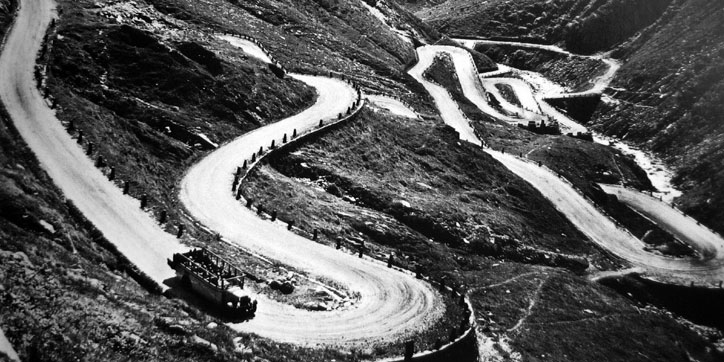Switzerland as operational landscape
Downloads
DOI:
https://doi.org/10.7480/rius.3.831Abstract
Drawing on episodes involving the use (and abuse) of maps in Switzerland, this essay pertains to the geopolitical agency of cartography in the production of urban territory. Maps generate and maintain particular discourses about the world, whether factual or fictional, with very real repercussions either way for the territory depicted. The UN motion made by Libyan leader Muammar al-Gadaffi to wipe Switzerland off the map, for instance, discloses just how much sway the cartographic imaginary holds in global relations. Guillaume- Henri Dufour’s mid-nineteenth century map re-territorialised a loose coalition of fiercely independent cantons into that unified economic and legislative space known as ‘Switzerland’, while underwriting an infrastructural machine that remains as central to Swiss self-esteem as it is to the nation’s economy. More recent examples of the map’s formative authority come by way of two unusual bids made in 2010 to redraw the boundaries of Switzerland. The controversial map by Armed Forces Chief André Blattmann recast Europe as enemy territory in an effort to rekindle patriotic identity and legitimise the need for an army. Conversely, right-wing politician Dominique Baettig put forth an equally contentious map calling for the annexation of regions from neighbouring countries that would create a new Swiss megacity in the heart of Europe. Regardless of how it is mapped, Switzerland’s contemporary urban fabric hardly adheres to an immaculate image, manifesting instead a disjunctive amalgam of bits and pieces that operate according to their own rules and agendas. And with such territorial entropy increasing on a planetary scale, we might wonder to what extent the map actively shapes these conditions as an actor in its own right rather than only neutrally reflecting them. In any case, territory is never simply given, but is constituted through the polymorphous elements, relations, and domains of reference that it assembles. Whereas the map might continue to express what is done in the name of territory, we do not yet know what territory itself can do.
How to Cite
Published
Issue
Section
License
Copyright (c) 2015 Marc Angélil, Cary Siress

This work is licensed under a Creative Commons Attribution 4.0 International License.
References
Aeberhard, R. (1983) Vom Luftschutz zum Zivilschutz. Solothurn, Verlag Vogt-Schild
Bachmann, A. & G. Grosjean (1969) Zivilverteidigung, Eidgenössische Justiz- und Polizeidepartement. Aarau, Miles-Verlag
Bundesamt für Statistik Schweiz (2013) Kulturlandverlust zu Gunsten von Siedlung und Wald: Bodennutzungswandel in m2 pro Sekunde (2000, revised 2013)
Christiaanse, K. et al. (2009) Open City: Designing Coexistence. Amsterdam, Sun Architecture
Diener, R., J. Herzog, M. Meili, P. de Meuron & Ch. Schmid (2004) Switzerland – An Urban Portrait. Basel, Birkhäuser Verlag
Foucault, M. (2004/2007) Security, Territory, Population. Lectures at the Collège de France 1977-1978. New York, Palgrave Macmillan
Frisch, M. (1989) Schweiz ohne Armee? Ein Palaver. Zurich, Limmat Verlag
Fuhrer, H.R. & M. Wild (2010) Alle roten Pfeile kommen aus Osten – zu Recht? Das Bild und die Bedrohung der Schweiz 1945-1966 im Licht östlicher Archive. Baden, Verlag für Kultur und Geschichte
Gugerli, D. (1998) ‘Politics on the Topographer’s Table: The Helvetic Triangulation of Cartography, Politics, and Representation’, in: T. Lenoir (ed.) Inscribing Science: Scientific Texts and the Materiality of Communication. Stanford, CA, Stanford University Press, pp 96-97
Gugerli, D. (1999) ‘Der Hirtenknabe, der General und die Karte’, in: WerkstattGeschichte nr. 23. Essen, Klartext Verlag, pp 53-73
Gugerli, D. & D. Speich (2002) Topografien der Nation. Politik, kartografische Ordnung und Landschaft im 19. Jahrhundert. Zurich, Chronos Verlag
Heller, M. & A. Volk (1999) Die Schweizer Autobahn. Zurich, Museum für Gestaltung
Hermann, C. (2010) ‘Schweizer Eisenbahn- und Bergidylle im Privatgarten’, in: E. Bierende et al. (eds.) Helvetische Merkwürdigkeiten. Bern, Peter Lang, pp 19-39
Kreis, G. (2010) Schweizer Erinnerungsorte. Zurich, Verlag Neue Zürcher Zeitung
Kurz, H.R. (1965) General Henri Guisan. Zurich, Musterschmidt Verlag
Löpfe, Ph. & W. Vontobel (2011) Aufruhr im Paradies: Die Neue Zuwanderung Spaltet die Schweiz. Zurich, Orell Füssli Verlag
Mooser, J. (2000) ‘Spiritual National Defence in the 1930s: Swiss Political Culture between the Wars’, in: G. Kreis (ed.) Switzerland and the Second World War. London: Frank Cass, pp. 236-260
Perrenoud, M (2000) ‘Foreign Trade and Swiss Politics, 1939-45’, in: G. Kreis (ed.) Switzerland and the Second World War. London, Frank Cass
Schneider, M. & A. Eisinger (2003) Stadtland Schweiz, an Avenir Suisse publication. Basel, Birkhäuser Verlag
Schwager, Ch. (2004) Falsche Chalets. Zurich, Edition Patrick Frey
Stamm, P. (2003) ‘Farewell from the Réduit: The long walk’, in: Bunker: Unloaded. Lucerne, Edizioni Periferia, p. 85 (originally published in 1998)
Weber, M. (2011) Die protestantische Ethik und der Geist des Kapitalismus.Munich, Verlag C. H. Beck (originally published in 1905)




